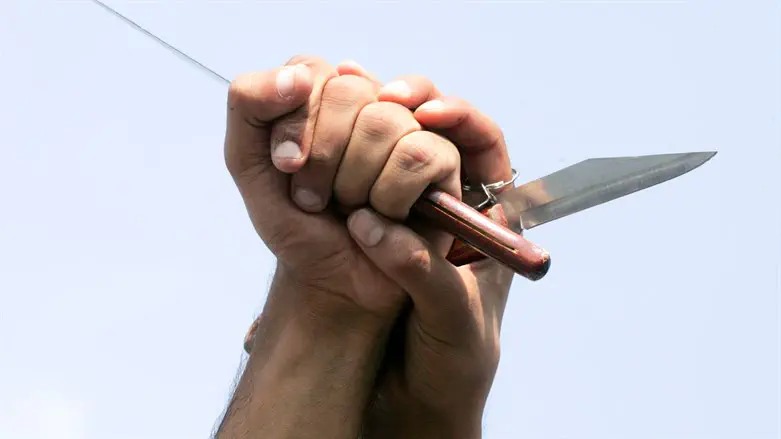
Throughout history, knives have been used both as tools of survival and instruments of violence. Unlike firearms, which are often associated with warfare and mass destruction, knives carry a deeply personal and symbolic significance in the context of attacks. Their use in jihadist violence represents a convergence of practicality, accessibility, and an intimate connection between attacker and victim. From political assassinations to lone-wolf terrorist attacks in Europe, the United States, and Israel, knives have consistently been wielded as more than just physical weapons—they symbolize fear, ideological warfare, and rebellion against perceived enemies.
One of the most striking aspects of knife attacks is their psychological impact. Unlike shootings, where distance often separates the attacker from the victim, knife attacks are direct and require close proximity. This intimacy heightens the brutality of the act and creates a sense of horror and vulnerability. The physical sensation of a blade penetrating flesh and the visible wounds left behind make knife violence particularly terrifying.
Moreover, jihadist knife attacks often involve a prolonged struggle, emphasizing the assailant’s determination and ideological zeal. Victims are often left traumatized, not just physically but mentally, as the sheer savagery of the attack can be haunting. Society, in turn, perceives knife attacks as deeply unsettling, reinforcing the idea that such violence is personal, calculated, and intended to instill fear.
One of the primary reasons knives are frequently used in jihadist attacks is their accessibility. Unlike firearms, which are heavily regulated in many countries, knives are common household items, easily obtainable without suspicion. This makes them the weapon of choice for many radicalized individuals acting on behalf of groups such as ISIS, Al-Qaeda, and Hamas.
Beyond accessibility, the symbolism of knives in jihadist violence is deeply rooted in ideology. Islamist terrorist organizations have explicitly called for “lone-wolf” operatives to use knives as an effective method of attack. In online propaganda, groups like ISIS have glorified knife attacks, instructing their followers to target civilians, law enforcement, and military personnel. The use of a knife aligns with their call for asymmetrical warfare—using whatever means are available to strike fear into the hearts of their enemies.
In recent years, jihadist-inspired knife attacks have become increasingly common, particularly in Western countries and Israel. The 2016 Saint-Étienne-du-Rouvray church attack in France, where two Islamist terrorists brutally murdered a Catholic priest, and the 2020 Vienna knife attack highlight the persistent threat of jihadist terrorism in Europe. In the United States, the 2016 Ohio State University attack saw a Somali refugee inspired by ISIS use a car and a knife to injure multiple people, while other attacks have been reported in various U.S. cities, often involving individuals radicalized through online propaganda.
In Israel, the “Stabbing Intifada” of 2015-2016 saw Palestinian Arab terrorists carry out numerous knife assaults against Israeli civilians and soldiers, with such attacks continuing sporadically, often fueled by tensions over religious and political disputes. These incidents highlight how jihadist groups leverage knives as an accessible and effective weapon to spread terror and advance their ideological objectives.
The use of knives in jihadist violence is not a new phenomenon. Historically, jihadist ideologues have emphasized the importance of using any available means to fight perceived enemies. The concept of “individual jihad” or “leaderless resistance” has encouraged radicalized individuals to take violent action, even without formal ties to terrorist organizations. In Islamic extremism, knives symbolize both personal sacrifice and a method of enacting divine retribution. Beheadings conducted by groups such as ISIS have reinforced the role of knives as tools of execution and terror, with propaganda videos deliberately showcasing the brutality of such acts to instill fear and recruit followers.
The widespread availability of knives presents a challenge for law enforcement agencies worldwide. While many governments have implemented strict gun control laws, regulating knives is far more complex. Unlike firearms, which serve a singular purpose, knives are essential tools for cooking, hunting, and everyday tasks, making it difficult to impose outright bans. However, many jurisdictions have introduced measures to curb jihadist knife attacks, such as increased surveillance of radicalized individuals, counterterrorism operations targeting online propaganda, and stricter penalties for carrying knives in public without a valid reason.
In Israel, security forces have adapted their counterterrorism strategies to address the rise of knife attacks, increasing police presence and authorizing rapid response measures to neutralize terrorist assailants. Despite these efforts, the persistence of jihadist knife attacks underscores the challenge of addressing the root causes of radicalization.
The symbolism of knives in jihadist attacks extends far beyond their function as weapons. They represent fear, ideological warfare, and the asymmetrical nature of modern terrorism. Their accessibility ensures that they will remain a prevalent instrument of attack, challenging law enforcement and societies alike to find solutions to curb jihadist-inspired violence. Understanding the deeper significance of knife terror attacks in jihad requires examining not just the individuals who wield them, but also the cultural, historical, and ideological factors that make knives such potent symbols of violence.
Amine Ayoub,a Middle East Forum Fellow, is a policy analyst and writer based in Morocco
